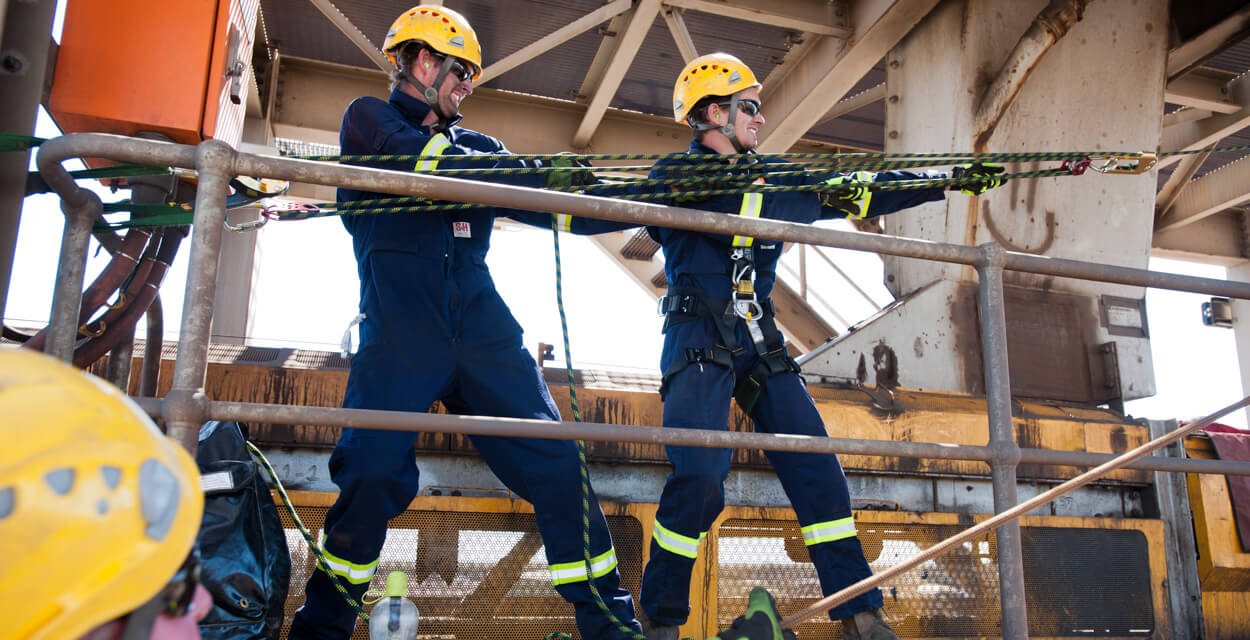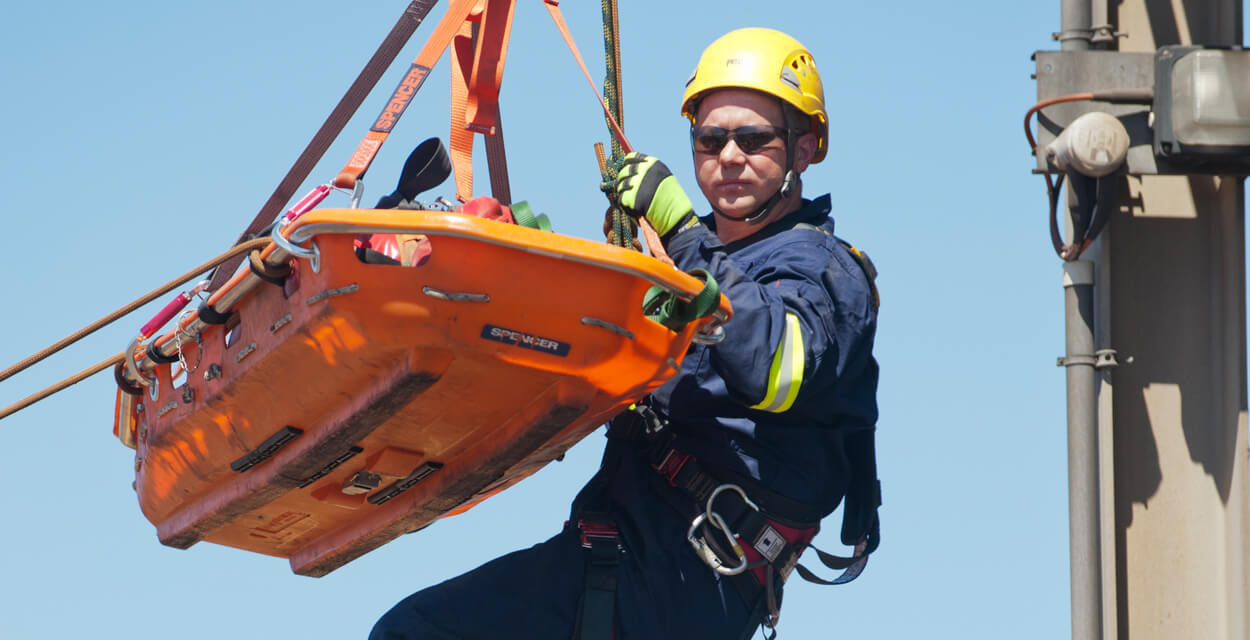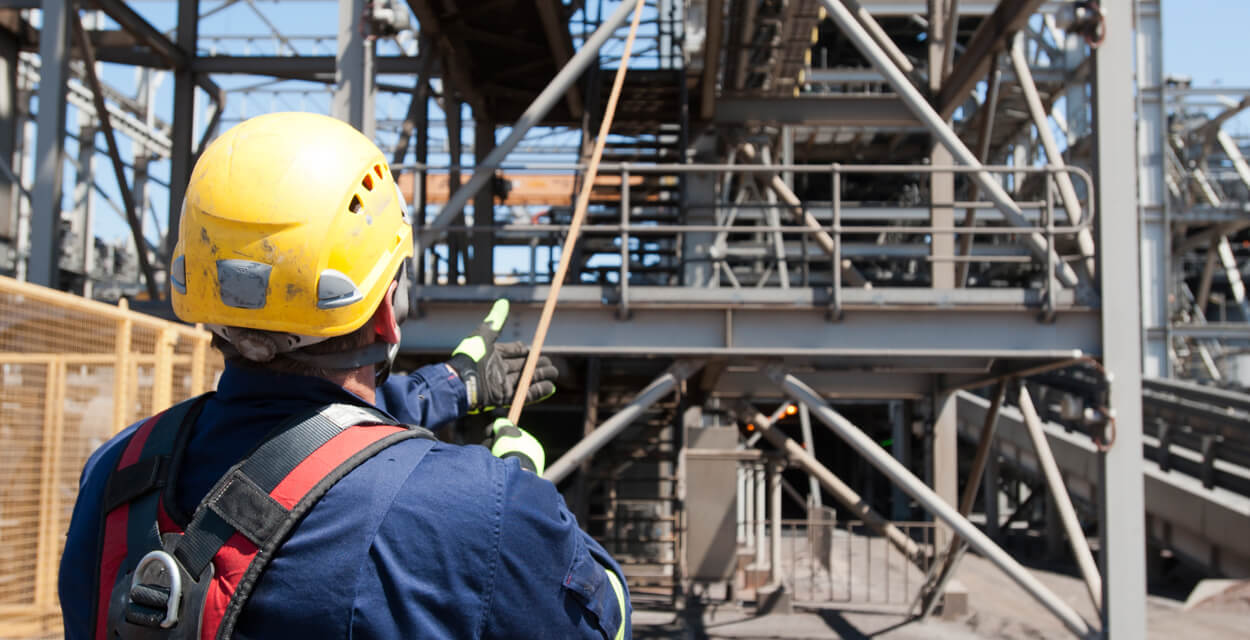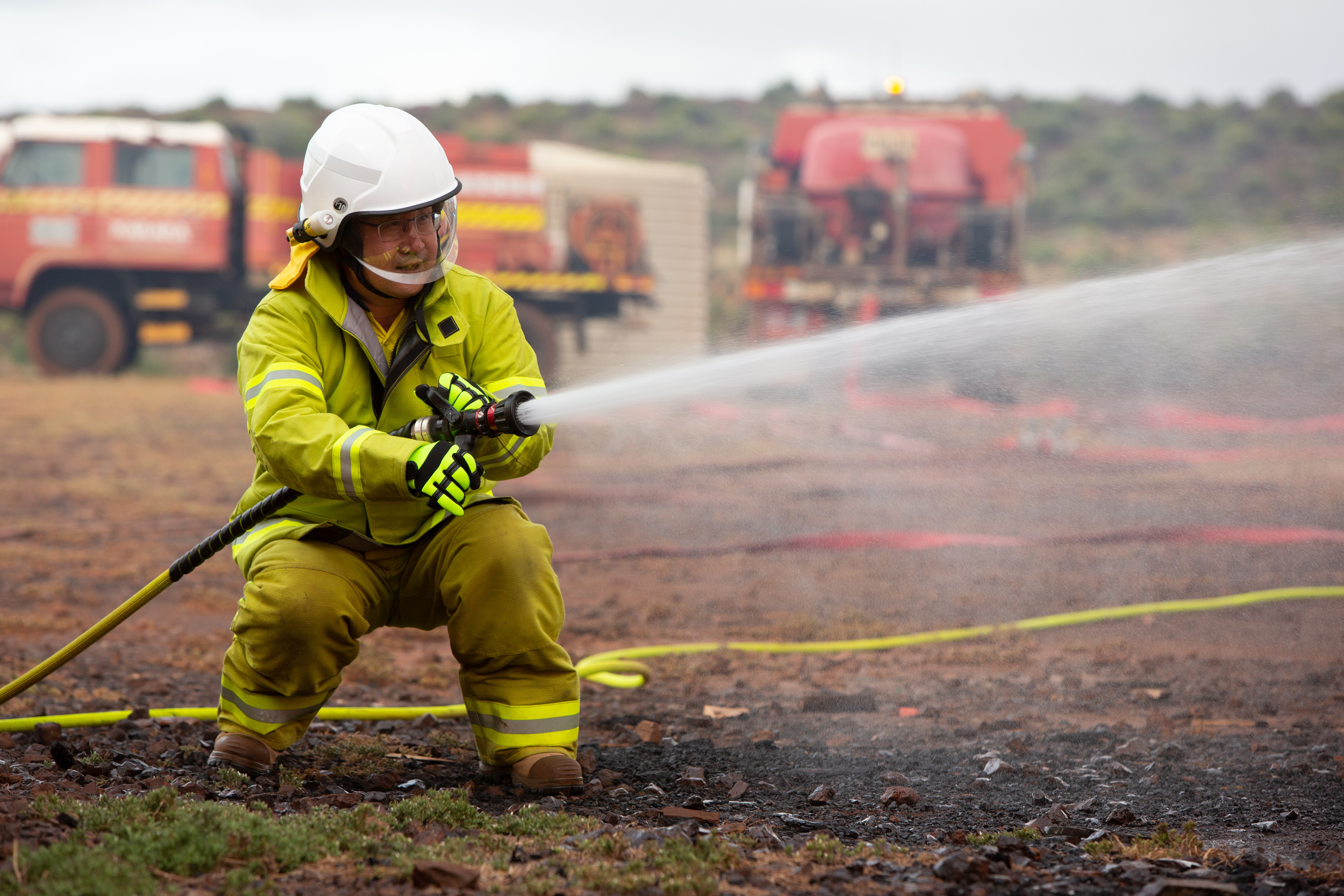Progressive Rehabilitation of Disturbed Areas
Karara actively undertakes rehabilitation when areas are no longer required to be left open and accessible. This not only allows us to commence the important work of returning disturbed areas to stable and productive habitats as soon as possible but also allows us to conduct monitoring and research on the effectiveness of our rehabilitation methods and make adjustments to maximise the success of our programs.
Karara can be proud of the success of much of our rehabilitation work, however, it does not come by chance. Careful mine site planning informed by knowledge on the nature of waste materials, care and attention to the protection of top soil and cleared vegetation, skilled machinery operators and the timely collection and treatment of viable locally sourced seed stocks are all essential.

Terapod waste rock dump February 2014
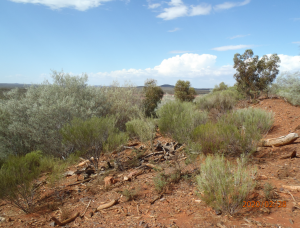
Terapod waste rock dump February 2020
Rehabilitation and Restoration of Threatened Species
The Mid West is home to the endangered shrub species Acacia woodmaniorum. Karara has collaborated closely with the Department of Biodiversity, Conservation and Attractions (DBCA) to ensure the ongoing recovery of this endangered species. Karara and DBCA have also developed a Translocation Plan to enable the species to be effectively used for the rehabilitation of land disturbed or affected by mining or exploration activities. Karara’s site Environmental Team has collected more than 3,000 cuttings and 150 specimens of the species to further the success of major translocation and plant propagation/generation programs. Specimens of Acacia woodmaniorum are maintained in our nursery to maintain a ready supply of seed for ongoing rehabilitation efforts.

Acacia woodmaniorum
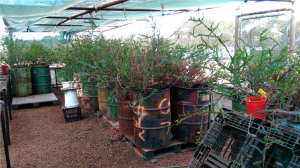
Acacia woodmaniorum seed nursery.
Pre-clearing Controls to Protect Threatened Fauna Species
The lands around Karara’s Mid West tenements support two significant and threatened fauna species – the iconic ground nesting megapode of Australia’s mallee country – the Malleefowl and the diminutive but charming Western Spiny-tailed Skink.
The Malleefowl are renowned for their construction and (during the breeding season) their fastidious maintenance of large ground nests 3-5 m wide and over 1 m high. Nests are composed of soil and vegetation and act as compost piles generating heat to incubate the eggs. The species is sadly threatened by foxes, bushfires, land clearing and habitat fragmentation throughout their range.
The Western Spiny-tailed skink most resembles a bob-tail or blue tongue lizard which are well known to most Australians. The Western Spiny-tailed skink is smaller, and as its name suggests, it has a spiny tail. They live in small social groups around fallen trees and branches which provide hollows and refuges. Like the Malleefowl they are relatively common within the Karara Mid West tenements.
To minimise impacts on these threatened species Karara’s environment team conducts pre-clearing inspections to relocate Western Spiny-tailed Skinks and; if disturbance cannot be postponed, will relocate and/or incubate eggs from active Malleefowl nests.
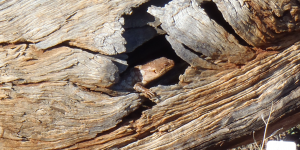
WSTS in a log hollow
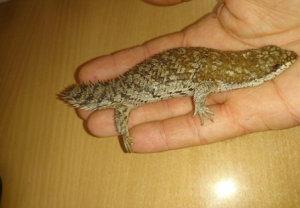
Juvenile WSTS
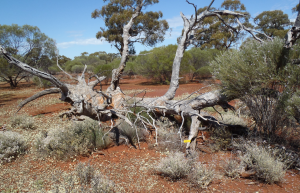
WSTS habitat log
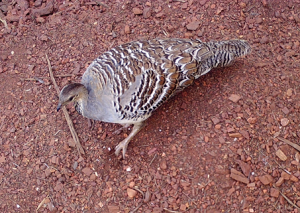
Malleefowl
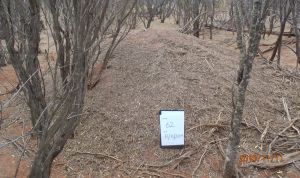
Active Malleefowl mound
Malleefowl & Western Spiny-tailed Skink Monitoring and Research
Since Karara’s development, the company has had a special interest in and taken active steps to improve the available knowledge and understanding of the Malleefowl. This has included the use of motion sensor cameras to monitor active Malleefowl mounds and gain an insight into their behaviour. A long term monitoring program is in place, annually monitoring over 90 mounds on a rotational basis from over 500, both historical and recent mounds, identified within 20 Km of the Karara Mine Site. This has provided valuable information on the nesting patterns of Malleefowl.
Malleefowl’s on average lay 14 eggs. The male spends several hours each day covering and uncovering the nest to regulate the heat generation by composting vegetation and using its beak as a thermometer, is able to maintain a nest temperature of 32-340C.
An extensive multi-year research program is also being undertaken on site by Curtin University, which is improving our understanding and ability to protect the Western Spiny-tailed Skink, furthering the knowledge base on Malleefowl’s and providing information on the implications of potential stressors from mining activities on protected species.
Feral Fauna Control
A targeted feral animal control program is operated by Karara to control feral animals and protect native flora, fauna and their habitat. The management program has included the use of motion sensor cameras at trapping sites to increase understanding about food lures and improve the success of trapping programs.
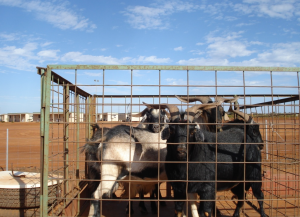
Goats trapped at Karara Village
Additional Scientific Research and Collaboration
Karara punches well above its weight in funding and supporting scientific research. Karara was a founding research partner with the Centre for Mine Site Restoration (CMSR) which now supports over 20 researchers and 10 post-graduate students, undertaking novel restoration field research, much of it centred on Karara. The research represents the largest and most diverse mining restoration research hub in Western Australia. The research group has published multiple papers in international journals addressing a broad range of restoration topics including seed enablement, fauna utilisation of restored habitats, the development of microbial communities in post mining substrates; identifying suitable species and restoration techniques for tailing facilities.
One recent publication examines the use of restored habitat at Karara Mine Sites by goannas. The work conducted by Sophie Cross of Curtin University examined burrows, diggings and tracks in undisturbed and restored landscapes and gathered information on the movements of one individual for 3 weeks by attaching a GPS/VHS transmitter. The research provides valuable information for Australia’s mining industry and has recommendations on how to make the early stages of restored habitats more suitable for goannas.
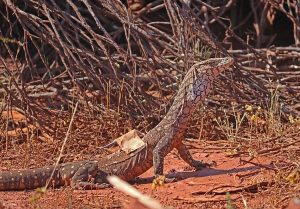
The goanna with the VHF/GPS unit attached to its back. Photograph: S. Cross.
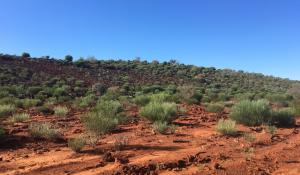
Restored habitat at Blue Hills North. Photograph: S. Cross.

As part of the Karara Project approval with the Western Australian Government, Karara entered into an extensive offset agreement with the Department of Biodiversity Conservation and Attractions. The multi-million dollar and multi-year project will support the government to plan and manage the “Karara Complex” – a massive 560,672 ha area of Mid West bush lands comprised of former pastoral properties, timber and nature reserves.
Karara has funded the development of a management plan for the Karara Complex which has set goals to:
- Stabilise and reverse decline in landscape condition
- Recover degraded habitats
- Promote habitat diversification
- Restore endemic native species and communities towards pre-pastoral assemblages
- Protect and promote cultural heritage
- Engage Aboriginal Traditional Owners in planning and management
- Engage with neighbours and other stakeholders
- Provide for and promote recreation and tourism
Karara and DBCA have established a governance structure and process to identify, approve and implement programs of work which support the overall vision and goals of the management plan.
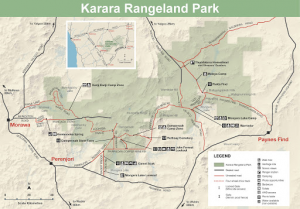
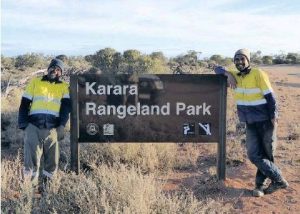
Rehabilitation of Mungada Ridge Exploration Disturbance
In 2009, Karara Mining Limited (KML) agreed to surrender mining interests over tenement M59/650 (Mungada Ridge) as part of the environmental offsets package negotiated for the Greater Karara Iron Ore Project (KIOP). During May 2020, the rehabilitation of the exploration activities along the ridge was completed as a requirement under the Mining Act 1978, and the approved Exploration Programme of Works. This rehabilitation was a key step towards KML relinquishment of tenement M59/650 for the development of a Class A Reserve over the area.
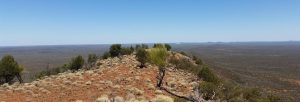
A look out point on Mungada Ridge

A rehabilitated cut and fill drill pad in the Tor Area, Mungada Ridge.
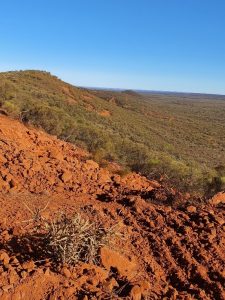
One of the numerous Acacia woodmaniorum (a species listed as threatened under Commonwealth legislation) protected and conserved during rehabilitation.
At Karara, we place a premium value on the environmental and heritage values of the mid-west region where we operate. To protect and enhance the environment and to eliminate or reduce any potential adverse impacts, we:
- Assess and prioritise environmental and heritage matters associated with our activities;
- Commit to protect the environment, through:
-
- The prevention of pollution from our operations
- Incorporate environmental considerations in the planning for any work task we do;
- Progressively rehabilitate any areas impacted by our operations and activities; and
- Implement programs to proactively manage regional biodiversity.
- Never compromise on our environmental or heritage standards and obligations;
- Communicate openly with all our stakeholders on environmental matters;
- Engage local communities to manage country in culturally sensitive ways;
- Partner with agencies to support research to understand the local environment;
- Set environmental objectives and measure achievement towards them to continuously improve outcomes and maintain compliance with our obligations;
- Apply, maintain and continually improve an effective environmental management system to enhance environmental performance;
- Meet the minimum legal requirements and regulatory obligations that apply for our business activities.
